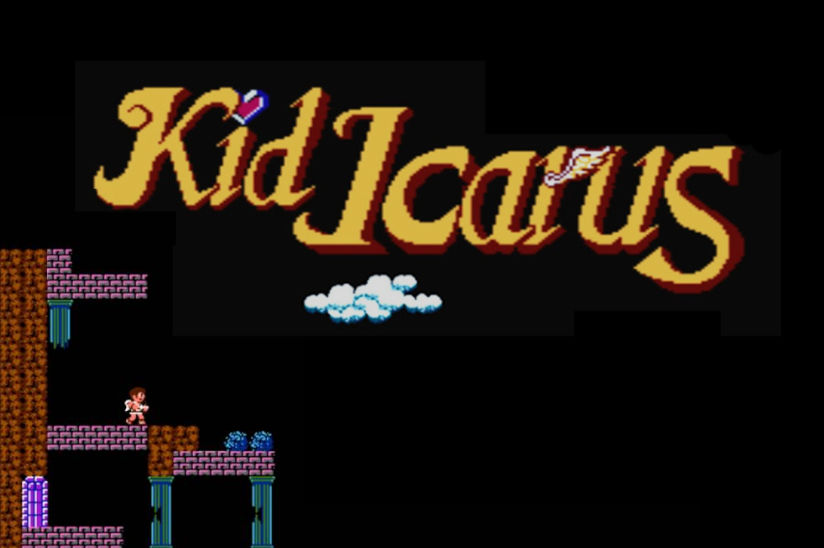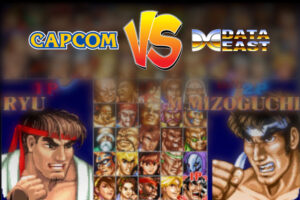
Kid Icarus
Originally released in 1986 for the Nintendo Entertainment System, Kid Icarus combines platforming and role-playing elements in a vibrant 8-bit world. Following the journey of protagonist Pit, players embark on a quest to retrieve sacred treasures and rescue Angel Land. This article explores the gameplay mechanics, historical significance, and enduring legacy of this classic title.
The Origin and Development of Kid Icarus
The development of Kid Icarus, an iconic title for the Nintendo Entertainment System (NES), can be traced back to Nintendo’s Research and Development 1 (R&D1) division, a hub of creativity and innovation that birthed several classics during the early era of gaming. At the helm of this creative endeavor were key figures such as Toru Osawa and the legendary Gunpei Yokoi, both of whom brought their unique visions and expertise to the project.
The concept for Kid Icarus emerged in a post-Super Mario Bros. landscape, where Nintendo was seeking to expand its portfolio of games and explore different genres. Unlike the platforming focus of Super Mario, Kid Icarus was designed with a more complex gameplay mechanics in mind. It was to combine elements of platforming, role-playing, and shooting, which was a bold departure from Nintendo’s existing formula. The idea was to create a game that not only challenged players with its difficulty but also provided a sense of progression and depth.
Toru Osawa, who was relatively new to game development at the time, played a pivotal role in shaping Kid Icarus. He initially conceptualized the game around the theme of Greek mythology, drawing inspiration from the story of the angelic hero Pit, who must rescue the goddess Palutena from the clutches of the evil Medusa. This mythological framework provided a rich narrative backdrop that added an extra layer of engagement for players, as they navigated treacherous environments filled with enemies and boss battles.
Gunpei Yokoi, the legendary game designer responsible for the creation of the Game Boy and Metroid, provided guidance and vision that proved crucial to the development process. Beyond his instrumental role at R&D1, Yokoi was known for his belief in the philosophy of “lateral thinking with withered technology,” encouraging his team to push the limits of what hardware could accomplish creatively. This meant that despite the NES’s limitations, they sought to innovate in ways that enhanced the gaming experience.
The game first saw light as a launch title for the Family Computer Disk System (FDS) in Japan in 1986. The FDS, a peripheral that allowed players to play games on floppy disks, gave developers a chance to create larger and more complex games than the standard cartridge format allowed. Kid Icarus thrived in this environment, utilizing the added storage potential for richer graphics, more expansive levels, and enhanced audio fidelity. The use of the FDS also allowed for more intricate save features, a significant advantage in a genre that often demanded considerable time and skill from players.
However, the shift from the FDS to the Nintendo Entertainment System presented unique challenges. The NES had a different storage mechanism, relying on cartridges, which limited the game’s size and complexity. To adapt Kid Icarus for a wider audience, the development team faced tough decisions regarding which aspects of the game to retain and which to simplify. Level design was particularly impacted by these constraints; they had to ensure that the game remained challenging yet approachable, balancing player frustration with enjoyment.
One of the key design choices was the incorporation of a vertical scrolling mechanic. Unlike many platformers of the time that confined players to horizontal scrolling, Kid Icarus allowed for a more dynamic awareness of the environment. Players could not only jump and navigate horizontally but also ascend vertically, which added a layer of depth to the gameplay. This mechanic served to immerse players further into the mythical world and created a unique sense of progression within their gaming experience.
Another decision that defined Kid Icarus was the item and power-up system, which was relatively expansive for its time. Players could collect various fruit and treasures that conferred temporary boosts, health restoration, and additional weaponry. This project system encouraged exploration and fostered a sense of achievement, as players learned how to manipulate their environment and item availability to their advantage, a gameplay loop that became a hallmark of later Nintendo titles.
Despite these innovations, development wasn’t without its hurdles. The team faced difficulties in balancing gameplay difficulty, with many test players finding certain sections overwhelmingly hard. The incorporation of power-ups served as a way to mitigate this, but still, some levels would become notorious for their unforgiving design. The game also had to deal with the constraints of the NES hardware, particularly concerning memory management and sprite limitations that restricted the number of on-screen enemies and obstacles.
As the team pushed against these technical and design challenges, they also cultivated a unique artistic style for Kid Icarus, one that would resonate deeply with fans. Taking cues from classical art, the character designs and backdrops featured ornate details, vivid colors, and an ethereal quality that emphasized its mythological inspiration. This visual approach not only set it apart from other titles of its time but also created a lasting impression that contributed to the game’s nostalgic legacy.
When Kid Icarus was ultimately released in North America in 1987, it was met with a mixture of commercial success and critical acclaim. The game’s inventive mechanics, coupled with its engaging story and challenges, resonated with gamers. Over the years, it laid the groundwork for not just a franchise but also influenced future game development practices, especially within the realm of action-adventure and RPG genres.
The story of Kid Icarus is one of innovation, determination, and a celebration of creativity borne from the limitations of its time. The impact of the collaborative efforts of Osawa, Yokoi, and the R&D1 team cannot be overstated, as they navigated the turbulent waters of game development to create a title that would leave a cultural imprint both in its immediate release era and for decades to come. The game’s journey from the Family Computer Disk System to the NES showcases a remarkable evolution that serves as a testament to the pioneering spirit of early video game creators.
Extra content
As a bonus for reading until here, you can download the Instructions Booklet for this game here:
Conclusions
Kid Icarus remains a beloved title that encapsulates the charm of early gaming, bridging elements of adventure and strategy. Its innovative gameplay and memorable art have influenced generations, showcasing Nintendo’s commitment to creating engaging experiences. As we look back, Pit’s adventures remind us of the magic found in 8-bit gaming.





